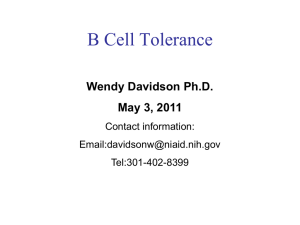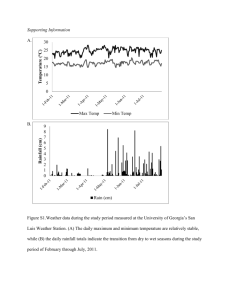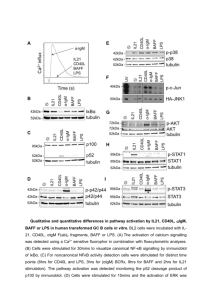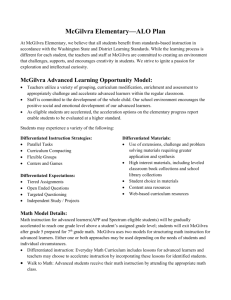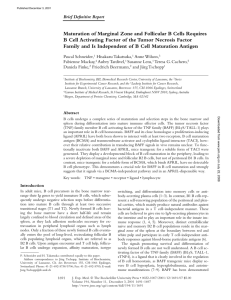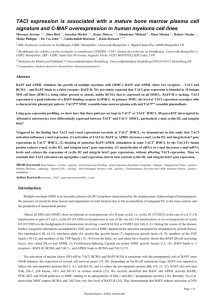ENHANCEMENT OF THE AN1 POPULATION BY BAFF: POTENTIAL
advertisement
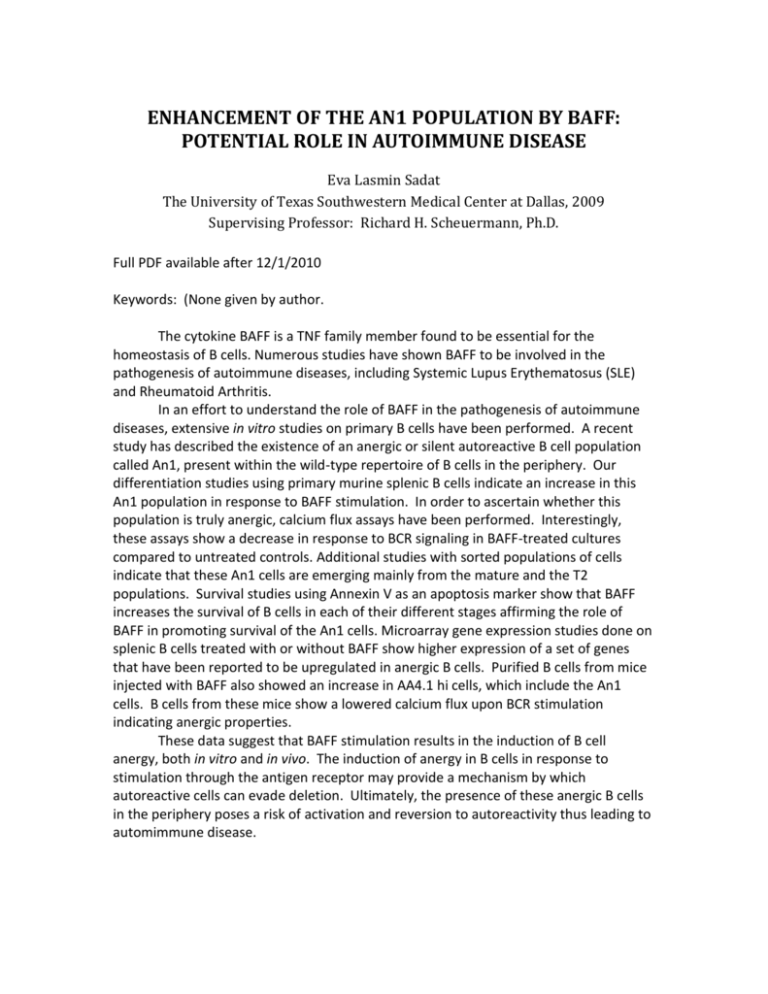
ENHANCEMENT OF THE AN1 POPULATION BY BAFF: POTENTIAL ROLE IN AUTOIMMUNE DISEASE Eva Lasmin Sadat The University of Texas Southwestern Medical Center at Dallas, 2009 Supervising Professor: Richard H. Scheuermann, Ph.D. Full PDF available after 12/1/2010 Keywords: (None given by author. The cytokine BAFF is a TNF family member found to be essential for the homeostasis of B cells. Numerous studies have shown BAFF to be involved in the pathogenesis of autoimmune diseases, including Systemic Lupus Erythematosus (SLE) and Rheumatoid Arthritis. In an effort to understand the role of BAFF in the pathogenesis of autoimmune diseases, extensive in vitro studies on primary B cells have been performed. A recent study has described the existence of an anergic or silent autoreactive B cell population called An1, present within the wild-type repertoire of B cells in the periphery. Our differentiation studies using primary murine splenic B cells indicate an increase in this An1 population in response to BAFF stimulation. In order to ascertain whether this population is truly anergic, calcium flux assays have been performed. Interestingly, these assays show a decrease in response to BCR signaling in BAFF-treated cultures compared to untreated controls. Additional studies with sorted populations of cells indicate that these An1 cells are emerging mainly from the mature and the T2 populations. Survival studies using Annexin V as an apoptosis marker show that BAFF increases the survival of B cells in each of their different stages affirming the role of BAFF in promoting survival of the An1 cells. Microarray gene expression studies done on splenic B cells treated with or without BAFF show higher expression of a set of genes that have been reported to be upregulated in anergic B cells. Purified B cells from mice injected with BAFF also showed an increase in AA4.1 hi cells, which include the An1 cells. B cells from these mice show a lowered calcium flux upon BCR stimulation indicating anergic properties. These data suggest that BAFF stimulation results in the induction of B cell anergy, both in vitro and in vivo. The induction of anergy in B cells in response to stimulation through the antigen receptor may provide a mechanism by which autoreactive cells can evade deletion. Ultimately, the presence of these anergic B cells in the periphery poses a risk of activation and reversion to autoreactivity thus leading to automimmune disease.

